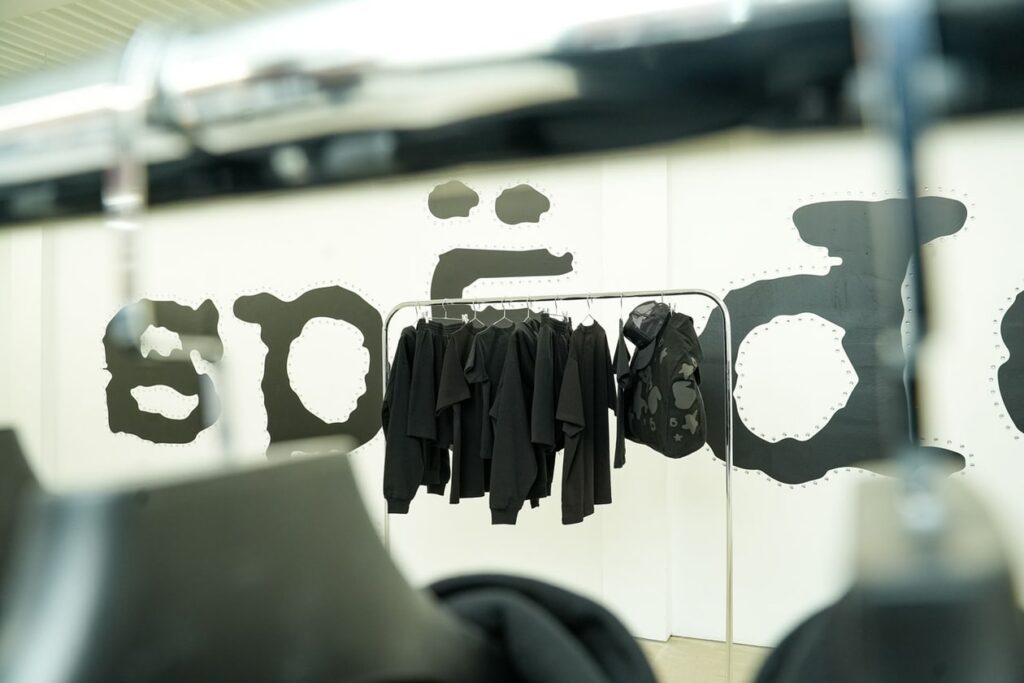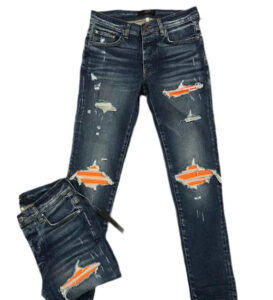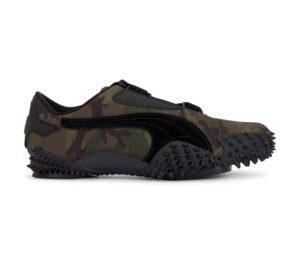


How Young Thug’s SP5DER turned a fleeting New York moment into a kinetic manifesto for future fashion
The Fifth of Forever: Entering the SP5DER Multiverse
On a moody Monday morning in Manhattan’s Soho district, 188 Lafayette Street shimmered with a frequency only a cult streetwear brand could generate. The date—5/5/25—was not just a palindrome of digits; it marked the third annual “Worldwide Five Day” for SP5DER, the daringly abstract streetwear house spearheaded by rap icon and fashion innovator Young Thug. As the rain threatened but never fell, diehards and the streetwear curious alike spiraled through downtown’s sidewalks toward something more than merch. They came for myth.
At first glance, the location looked like any other NYC pop-up. But like everything SP5DER touches, the surface is a decoy. Inside, a liminal gallery-space veiled in misty neon cast light on limited-run drops from the new “PHANTOM STONES” capsule—a collection that fused futurism, trap aesthetics, and surrealist Americana into garments that feel like interdimensional uniforms. There was no fanfare. No press wall. Just heat—and tension. By the hour, the line thickened, not just with hypebeasts, but stylists, alt-fashion kids, art students, and off-duty models scribbling “quit your job for the day peter no excuses” into the notes app like scripture.
SP5DER has never been a conventional label. It doesn’t follow the fashion calendar. It rarely plays by seasonal logic. And yet, what happened on this Worldwide Five Day proved the brand’s capacity to move product and people with the precision of a cultural lightning bolt. The one-day-only experience was less about commerce and more about consecration. It canonized a worldview. Or rather, a web.
Young Thug’s Trap Couture: From Mixtape Covers to Phantom Stones
SP5DER’s origin story is entangled with Young Thug’s evolution as an artist. Before the brand even dropped its first official threads, the visual cues were always embedded in Thug’s stylistic defiance—latex dresses, genderless silhouettes, hyper-color schemes. SP5DER became an avatar for that vision in cloth. Founded in 2019, and gaining mainstream buzz around 2021, the brand pulled motifs from motocross, Atlanta strip clubs, digital chaos, and luxury nihilism. It remixed ravewear and spider symbolism into a lingua franca for the post-pandemic aesthetic youthquake.
The “PHANTOM STONES” capsule, revealed only on 5/5, continues this mythology. This wasn’t a standard brand drop. It felt more like lore materializing into cotton and mesh. Each piece—jewel-toned hoodies with chromatic webs, crystal-studded balaclavas, and garment-dyed tees washed in spectral hues—was engineered to vanish into legend the moment it was sold. You didn’t cop clothes; you looted relics.
For SP5DER, materials matter, but mystique matters more. The textiles used in this collection ranged from burnout velour to thermochromatic knits, shifting tone with light or touch. Graphics evoked hood folklore: a melting spider, angelic serpents, and glyph-like numerals that hinted at either apocalypse or rebirth. These weren’t just fits. They were coded transmissions.
A Pop-Up That Felt Like a Portal
Most pop-ups are branded playpens—over-scented, over-hyped, designed for content capture. SP5DER rejected that formula. The 188 Lafayette location was dressed like a zone from a video game: blacklight corridors, prismatic installations, web-shaped sculpture grids, and staff in matching SP5DER jumpsuits who operated more like immersive theater actors than sales associates.
One installation—a mirrored obelisk surrounded by floating projectors—looped footage of Thug’s past performances, abstract street scenes, and cryptic text flashes (“404 not found / 777 risen / decode the silk”). At the center: the clothes, displayed on lucite mannequins fitted with LED-lit eyes. A disembodied voice echoed through the space at intervals: “In the web, time folds. This isn’t fashion—it’s frequency.”
The line outside took on a festival feel. DJs posted up on crates spun slowed trap instrumentals. Someone passed out temporary SP5DER tattoos. One girl sold digital spider poems for $5. You didn’t just wait. You entered.
Ritual and Rarity in the Age of Drop Culture
SP5DER understands scarcity not just as a sales strategy, but as emotional architecture. While many fashion brands have attempted to gamify exclusivity—through NFTs, app queues, or password-only preorders—SP5DER takes a more primal route: surprise, myth, and urgency. “Worldwide Five Day” isn’t a mass-market launch or digital raffle. It’s an analog happening—a tangible moment you either live through or miss forever.
There’s a lineage here. Think Supreme’s early Lafayette drops. Think Hood By Air’s guerrilla club shows. But SP5DER’s format is even more ephemeral. It offers no full runway collections, no seasonal previews, no lingering availability. Instead, it cultivates what Young Thug has always personified: being ahead of the moment, almost to the point of being misunderstood. Phantom Stones is exactly that. It’s fashion you might not recognize until five years from now—when you realize it predicted the very wave you’re now riding.
The Spiritual Side of the Web
To understand SP5DER is to understand its double edge: it’s a streetwear brand, but also a totem. The spider, across cultures, symbolizes fate, creativity, and predestination. In African folklore, Anansi is the trickster god and divine weaver. In urban mythology, the spider appears as guardian, gang sign, or graffiti motif. For SP5DER, this symbolism isn’t just aesthetic—it’s metaphysical.
At the pop-up, a small zine was given to early entrants. Inside: dreamlike illustrations of webs, planets, hands, and wings, alongside poetic fragments and one page that simply read: “PHANTOM STONES are memories you haven’t lived yet.” Whether this was a meditation or a marketing stunt didn’t matter. People clutched it like scripture.
Young Thug’s involvement here cannot be overstated. Though he’s been legally entangled in trials and tribulations, his creative spirit looms large over SP5DER’s DNA. His absence only amplifies the brand’s aura. If SP5DER feels haunted, it’s because it is—by Thug’s brilliance, defiance, and unknowable rhythm.
Soho as Stage: NYC and the Streetwear Pilgrimage
The decision to host this one-day-only activation in Soho is itself a commentary. Once the nerve center of New York’s avant-garde, the neighborhood has become a gentrified catwalk of global brands and TikTok stylists. SP5DER, however, brought back the energy of when downtown actually felt underground.
Unlike sanitized showroom installations, SP5DER’s pop-up was brash, cryptic, and slightly chaotic. A small verbal scuffle broke out when someone tried to cut the line. A dude in a ski mask offered to buy someone’s spot for $300. It was messy—and that was the point. SP5DER exists in the rupture, not the refinement.
By sundown, most sizes had vanished. Late arrivals stared into the glass storefront like it was a shrine. Inside, a mannequin wore the last unreleased piece: a translucent anorak with “FIVE / ALIVE / SP5DER” emblazoned across the chest in silver vinyl. No one could buy it. It wasn’t for sale. It was just there to haunt you.
Impression
As streetwear’s ecosystem increasingly gets absorbed by luxury conglomerates and corporate collabs, SP5DER remains a strange, beautiful outlier—built on poetry, pain, prophecy, and play. “Worldwide Five Day” didn’t just celebrate a brand. It proposed a new way to experience fashion: as ritual, riddle, and revelation.
SP5DER is not for everyone. But those who understand it—who feel it—don’t just wear it. They live in its code. The Phantom Stones collection, like the pop-up itself, may fade from physical memory, but it embeds itself in culture like a glyph. And maybe that’s the point.
Because in the web, nothing ever truly disappears. It just waits to be found again.
No comments yet.








